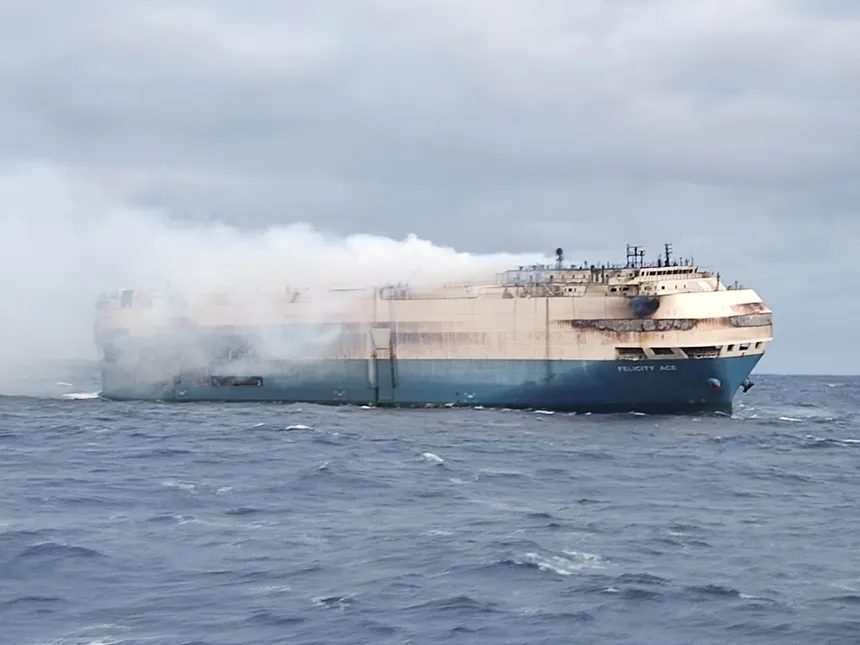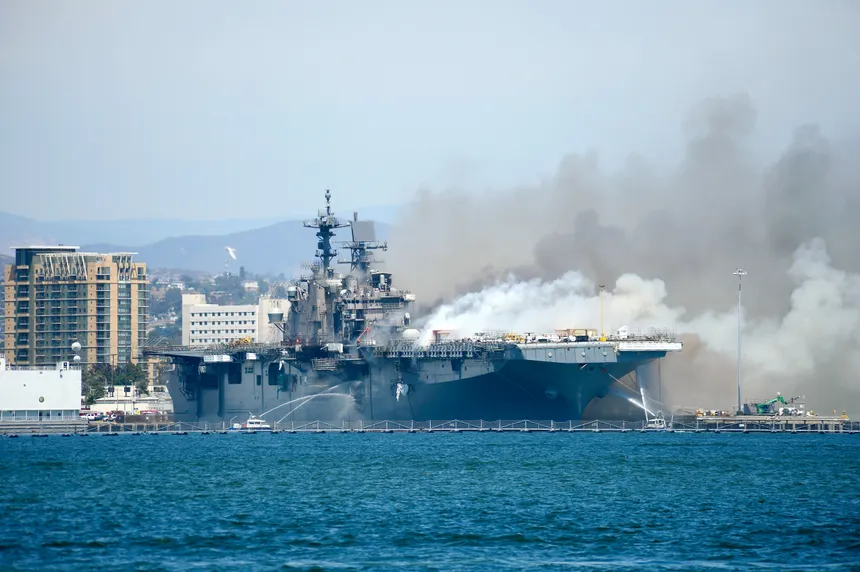Salvage crews have finally boarded the burning ship, Fremantle Highway, that has been aflame for two days off the Dutch coast, after temperatures on board dropped sharply and flames eased. The coastguard announced that the temperature on board the ship had decreased, and the fire was still raging but at a slower pace, with smoke also decreasing. The salvage workers established a new towing connection, making it easier to move the ship and keep it under control.
The incident began when the blaze broke out on the ship, causing one crew member to die and several others to be injured. The entire crew was evacuated in the early hours of Wednesday, with some crew members leaping into the sea and being rescued by a lifeboat. The cause of the fire has not been determined.
The Fremantle Highway was located 14 miles north of the island of Terschelling, close to busy North Sea shipping lanes and the internationally renowned migratory bird habitat, Wadden Sea. The ship, chartered by K Line, was carrying a total of 3,783 new vehicles, including 498 electric vehicles, according to the company’s spokesman Pat Adamson. This is higher than the initial report by the coastguard, which stated the ship was carrying 2,857 cars, including 25 electric cars.

Fire on Ship Cools Off Amid Salvage Efforts
The US National Transportation Safety Board has warned about the dangers of electric vehicle battery fires, which can occur due to thermal runaway, a chemical reaction that causes uncontrolled temperature and pressure increases. This type of fire can be particularly hazardous because it can spread rapidly and release toxic fumes.
The burning ship is also close to the Netherlands’ border with Germany, and German Environment Minister Steffi Lemke warned that if the ship were to sink, it could have catastrophic consequences for the environment. Earlier this month, firefighters in Newark, New Jersey, battled a similar blaze on a car transport ship for nearly a week, resulting in the deaths of two firefighters and injuries to five others.
As government officials continue to assess the situation, they are considering various scenarios to determine the next steps. With the fire easing and temperatures decreasing, salvage crews are now able to work more effectively to stabilize the ship and ensure that it does not pose a risk to the environment or human life.











































